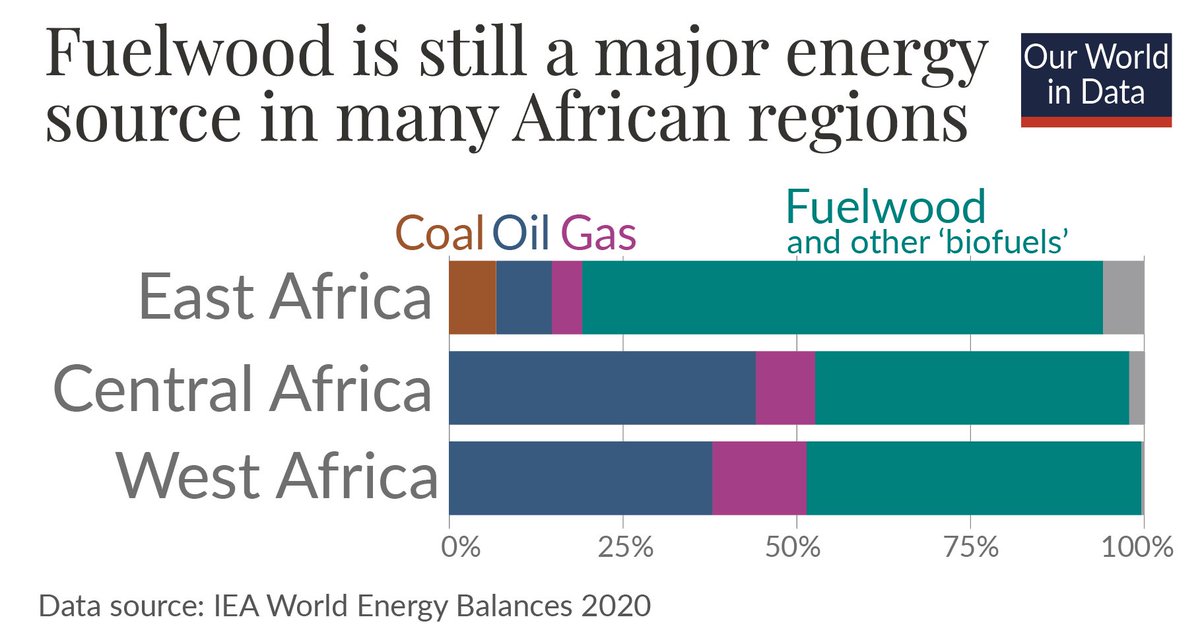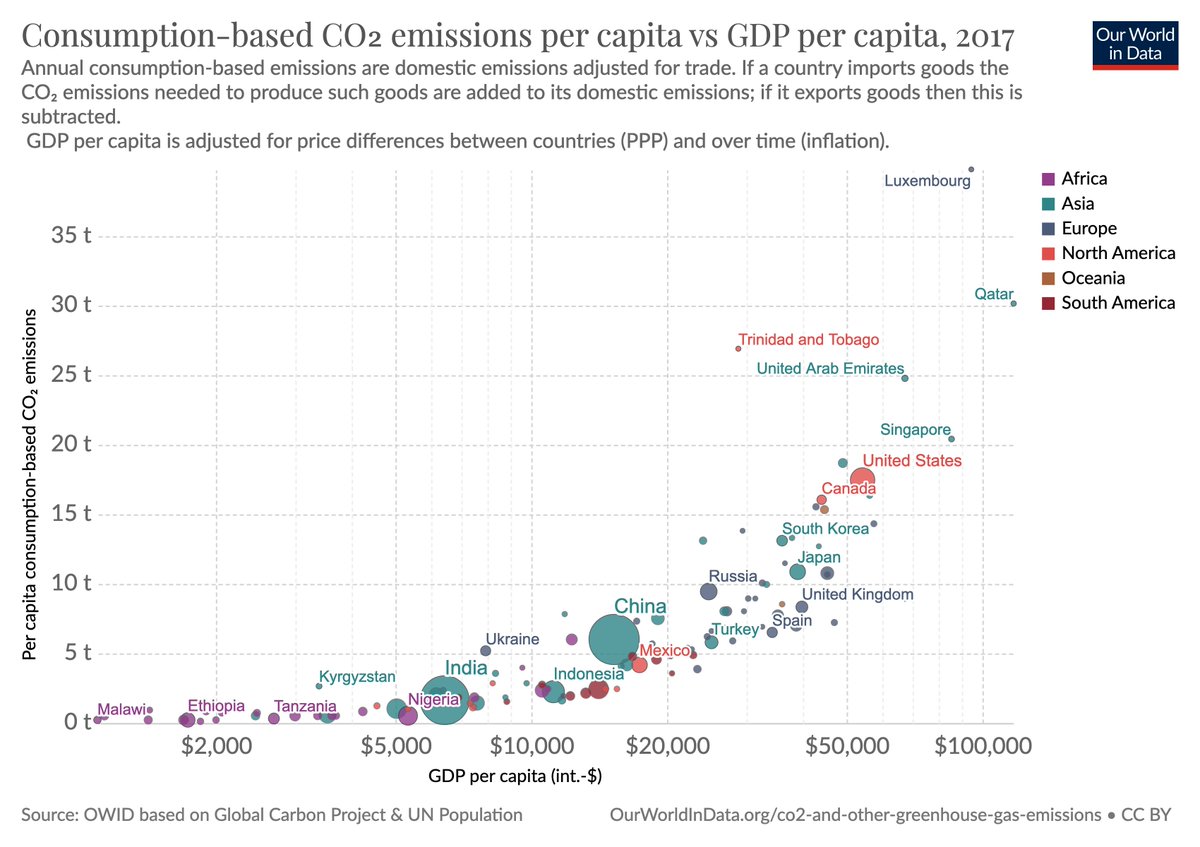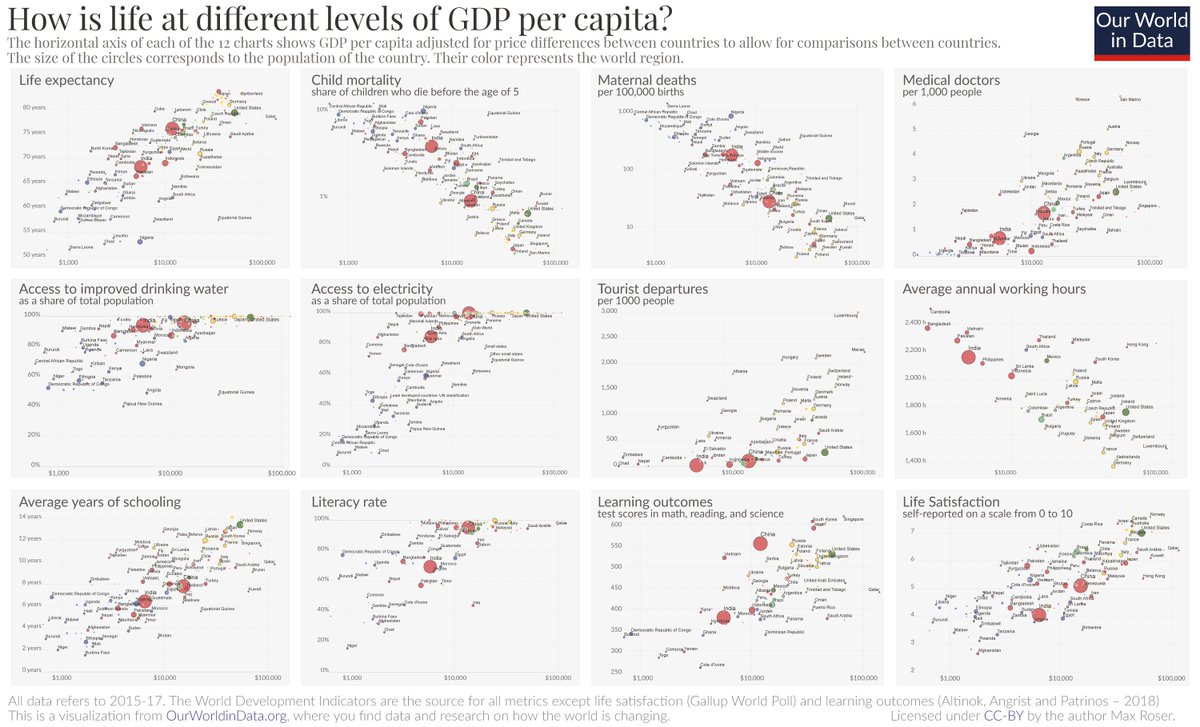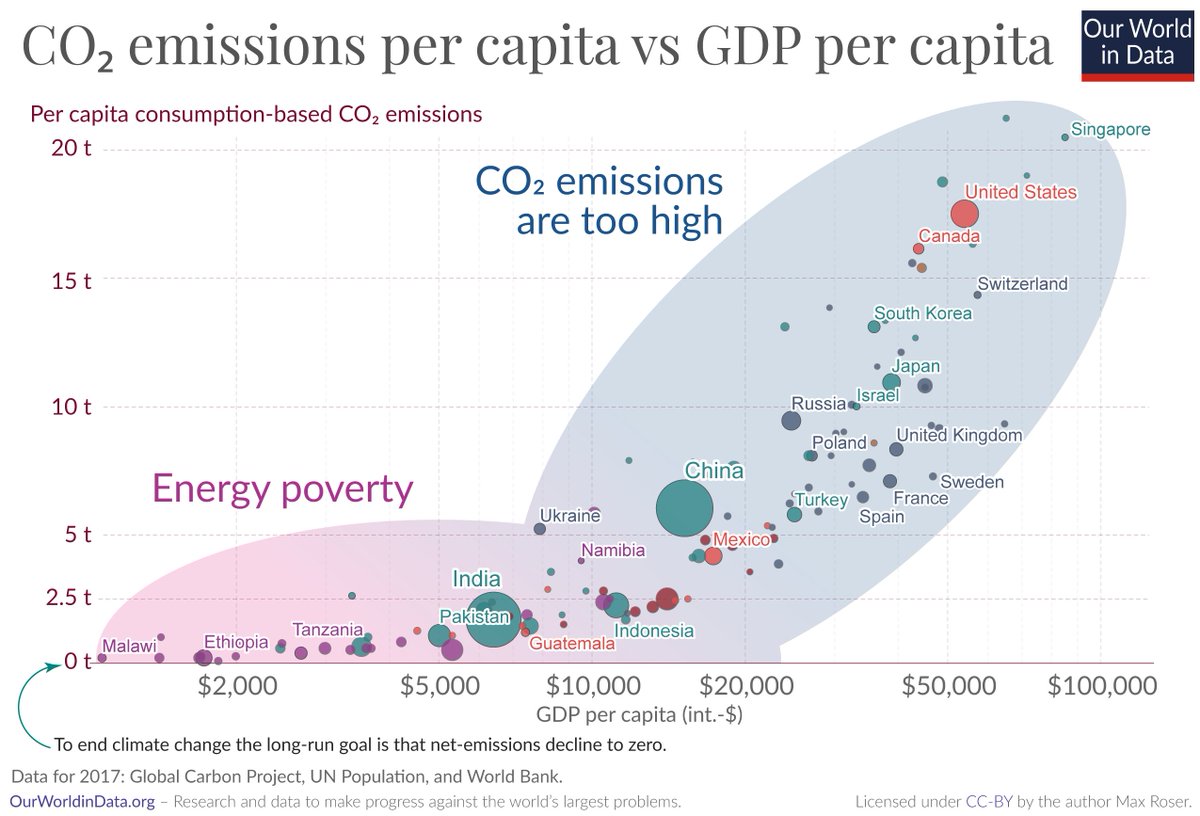Just published my new post on @OurWorldInData.
→ http://ourworldindata.org/worlds-energy-problem
The energy problem that dominates the public discussion is climate change, but the world's energy problem is unfortunately larger than that. https://twitter.com/OurWorldInData/status/1337027265507581952
→ http://ourworldindata.org/worlds-energy-problem
The energy problem that dominates the public discussion is climate change, but the world's energy problem is unfortunately larger than that. https://twitter.com/OurWorldInData/status/1337027265507581952
What is rightly making the headlines is the fact that the world’s greenhouse gas emissions are unsustainably high.
The production of energy is responsible for 87% of these emissions.
The production of energy is responsible for 87% of these emissions.
What is never making the headlines is the energy problem that affects the poorer half of the world.
The two charts show that many people in countries with a GDP per capita of less than $25,000 do not have access to electricity and clean cooking fuels.
The two charts show that many people in countries with a GDP per capita of less than $25,000 do not have access to electricity and clean cooking fuels.
The lack of access to modern energy comes at a massive cost to the health of people in energy poverty.
Indoor air pollution – which the WHO calls “the world’s largest single environmental health risk” – kills at least 1.6 million people annually.
[also https://ourworldindata.org/indoor-air-pollution]
Indoor air pollution – which the WHO calls “the world’s largest single environmental health risk” – kills at least 1.6 million people annually.
[also https://ourworldindata.org/indoor-air-pollution]
The use of wood as a source of energy in poor regions of the world also has a large negative impact on the environment.
And lastly, the lack of access to energy subjects people to a life in poverty.
No electricity means no refrigeration of food; no washing machine; and no light at night.
These children are sitting under a street lamp at night to do their homework.
No electricity means no refrigeration of food; no washing machine; and no light at night.
These children are sitting under a street lamp at night to do their homework.
And I think the problem of CO₂ emissions is often not fully understood.
As this chart shows it is the the richest countries have the very highest emissions. This is unsustainable and their emissions have to decline a lot.
As this chart shows it is the the richest countries have the very highest emissions. This is unsustainable and their emissions have to decline a lot.
Those that need to reduce emissions the most are the extremely rich.
The richest 1% in the EU emit on average 43 tonnes of CO₂ annually (9-times as much as the global average).
The richest 1% in the EU emit on average 43 tonnes of CO₂ annually (9-times as much as the global average).
The focus on the rich, however, can give the impression that it is only the emissions of the rich that are the problem.
What isn’t made clear enough in the public debate is that the emissions of the majority of the world population are too high to be sustainable.
What isn’t made clear enough in the public debate is that the emissions of the majority of the world population are too high to be sustainable.
The only people who are close to the low level of emissions that are sustainable over the long run are very poor people.
And this obviously comes at a very large cost for those people themselves.
And this obviously comes at a very large cost for those people themselves.
This plot visualizes the two sides of the global energy problem:
• In purple are those that live in energy poverty.
• In blue those whose greenhouse gas emissions are too high if we want to avoid severe climate change.
This is basically the visual summary of my post.
• In purple are those that live in energy poverty.
• In blue those whose greenhouse gas emissions are too high if we want to avoid severe climate change.
This is basically the visual summary of my post.
The problem is that those who live in energy poverty cannot afford sufficient energy and those that can afford sufficient energy rely largely on fossil fuels to meet their energy needs.
Key to making progress on both of these fronts is the *source of energy* and its *price*.
Key to making progress on both of these fronts is the *source of energy* and its *price*.
Once we look at it this way it becomes clear that the twin energy problems are really the two sides of one big problem:
We lack large-scale energy alternatives to fossil fuels that are cheap, safe, and sustainable.
We lack large-scale energy alternatives to fossil fuels that are cheap, safe, and sustainable.
Without these technologies we are trapped in a world where we have only bad alternatives:
Low-income countries that fail to meet the needs of the current generation,
High-income countries that compromise the ability of future generations to meet their needs,
Low-income countries that fail to meet the needs of the current generation,
High-income countries that compromise the ability of future generations to meet their needs,
and middle-income countries that fail in both respects.
In the post I'm also looking at the progress that some countries have made.
Thank you very much for reading. I hope you find it useful. https://ourworldindata.org/worlds-energy-problem
Thank you very much for reading. I hope you find it useful. https://ourworldindata.org/worlds-energy-problem

 Read on Twitter
Read on Twitter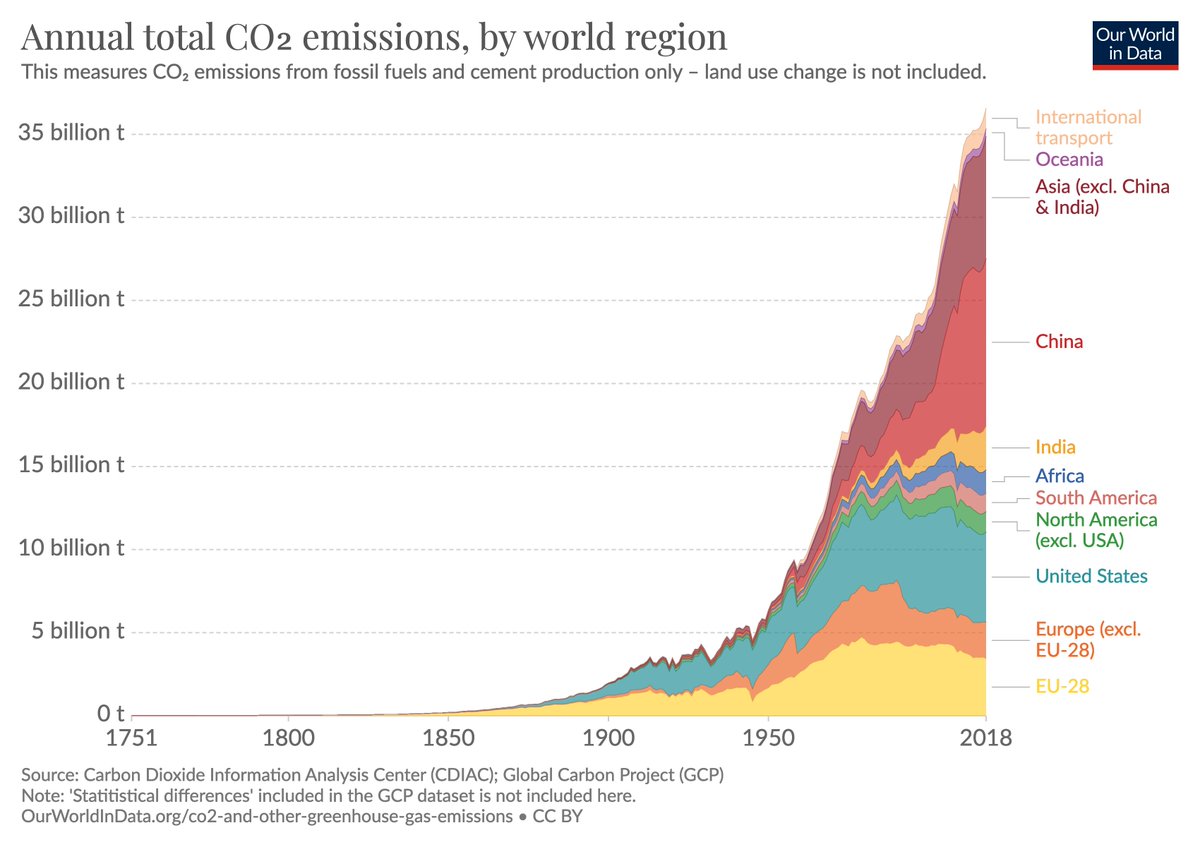
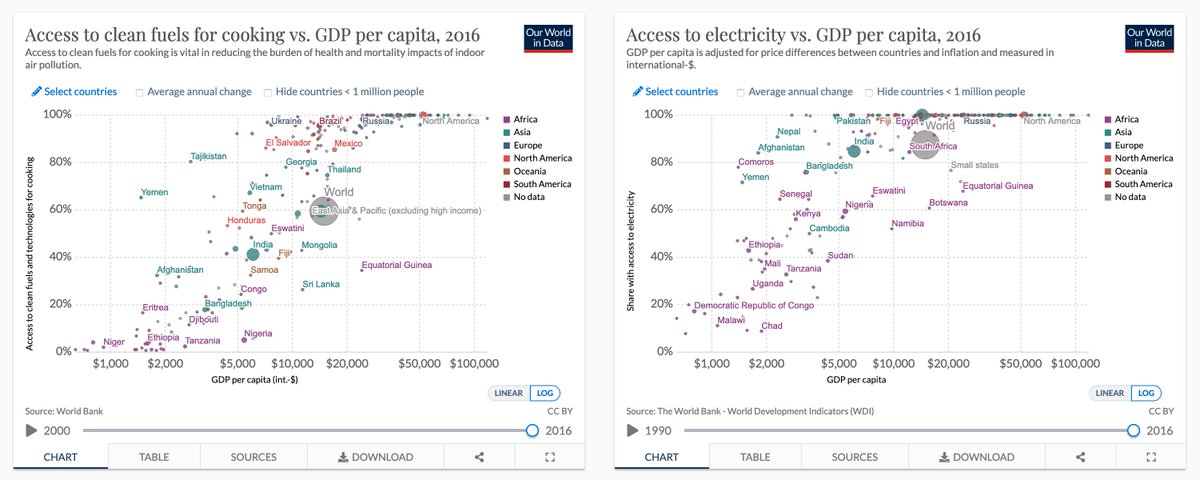
![The lack of access to modern energy comes at a massive cost to the health of people in energy poverty. Indoor air pollution – which the WHO calls “the world’s largest single environmental health risk” – kills at least 1.6 million people annually.[also https://ourworldindata.org/indoor-air-pollution] The lack of access to modern energy comes at a massive cost to the health of people in energy poverty. Indoor air pollution – which the WHO calls “the world’s largest single environmental health risk” – kills at least 1.6 million people annually.[also https://ourworldindata.org/indoor-air-pollution]](https://pbs.twimg.com/media/Eo4Xi9xXIAE8usa.jpg)
